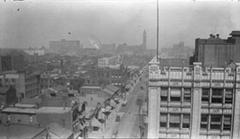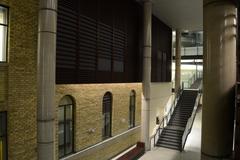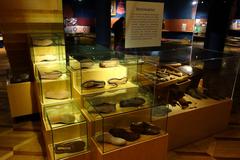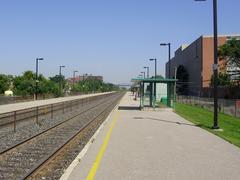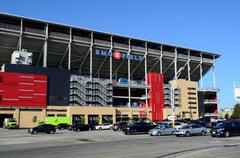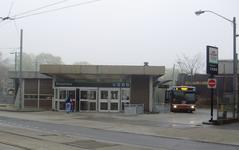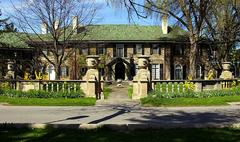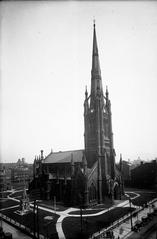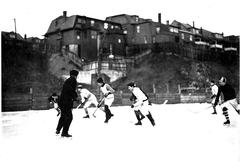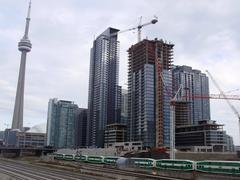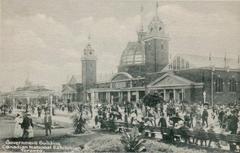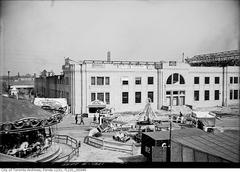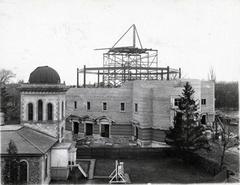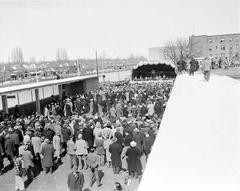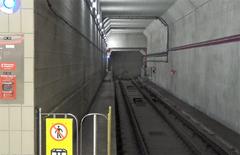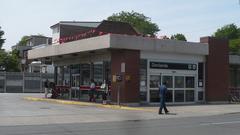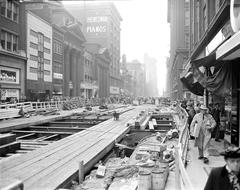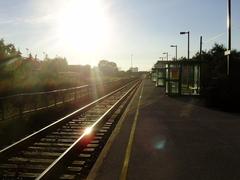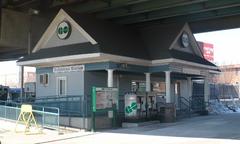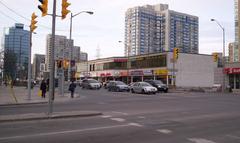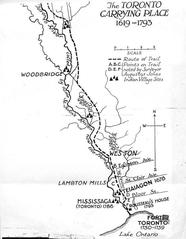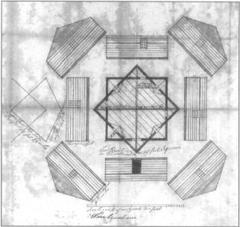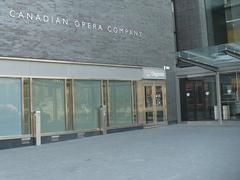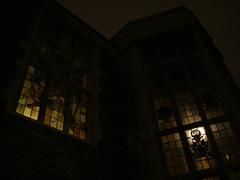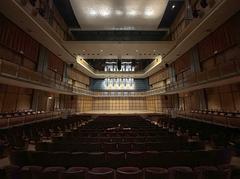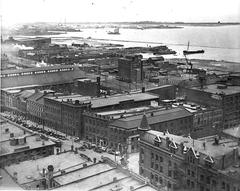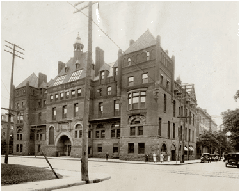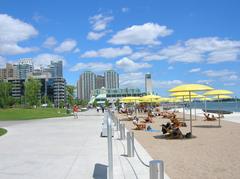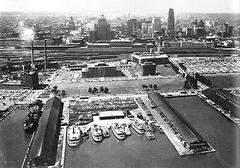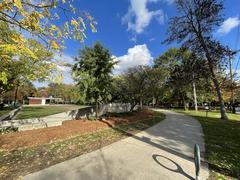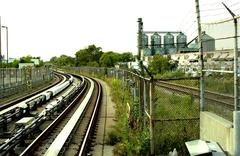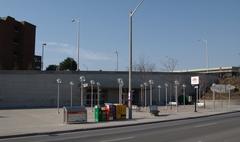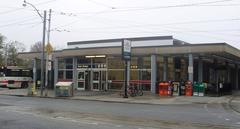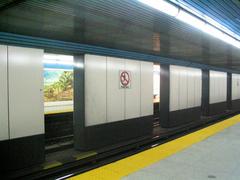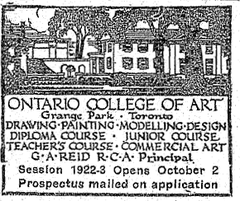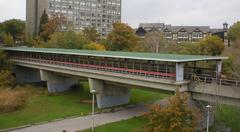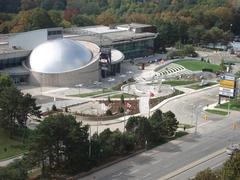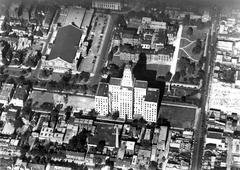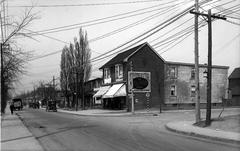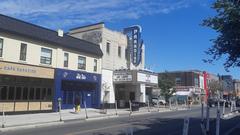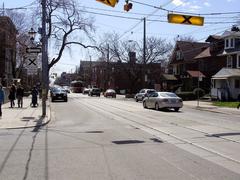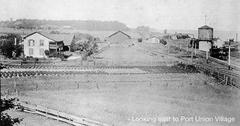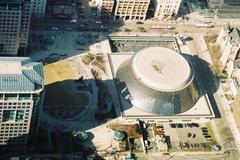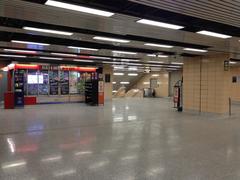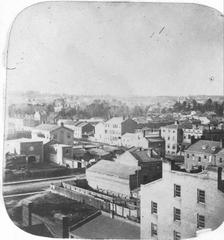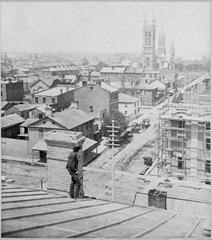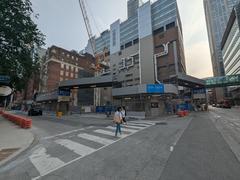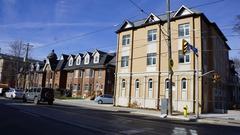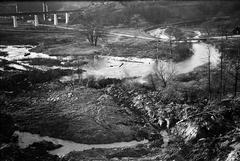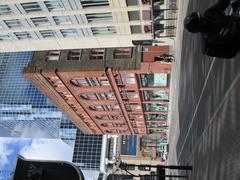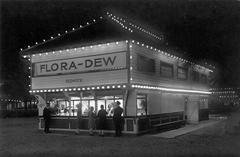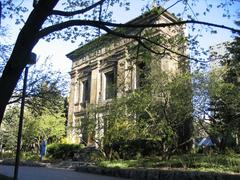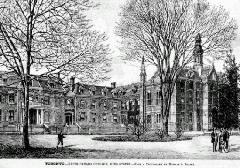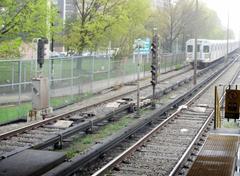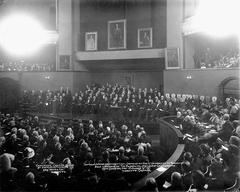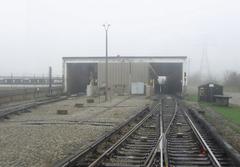Baldwin Steps Visiting Hours, Tickets, and Historical Sites in Toronto
Date: 31/07/2024
Introduction
The Baldwin Steps in Toronto, Canada, stand as a captivating blend of history, architecture, and natural beauty. Located in the Casa Loma neighborhood, these steps have become a significant cultural and historical landmark, connecting visitors to the city’s rich past. The Baldwin Steps are named after the Baldwin family, particularly Robert Baldwin, a former premier of Ontario, whose family were the first landowners in the area (Wikipedia). This guide provides comprehensive insights into the Baldwin Steps, covering their historical significance, visitor tips, and nearby attractions, making it a must-read for anyone planning to explore Toronto.
Constructed along the ancient shoreline of Lake Iroquois, the Baldwin Steps offer a glimpse into the geological history of the region. The area around Davenport Road, where the steps are located, was once a crucial trail for Indigenous peoples, adding a layer of cultural significance to this landmark (CBC News). The steps are not only a functional piece of urban infrastructure but also a popular spot for fitness enthusiasts, photographers, and fans of the film ‘Scott Pilgrim vs. The World’ (The Finch and Pea).
Table of Contents
Historical Background
Origins and Early Development
The Baldwin Steps, a prominent public outdoor staircase in Toronto, Ontario, Canada, have a rich history dating back to the 19th century. These steps are constructed of stone and concrete and are situated on a steep escarpment that marks an ancient shoreline. The escarpment is part of the ancient Lake Iroquois shoreline, which existed thousands of years ago. The steps are named after the Baldwin family, particularly Robert Baldwin, a former premier of Ontario, whose family were the first landowners in the area (Wikipedia).
The Baldwin Family
The Baldwin family played a significant role in the early development of Toronto. Robert Baldwin, a key figure in Canadian politics, was instrumental in the establishment of responsible government in Canada. The family’s landholdings included the area where the Baldwin Steps are now located. This connection to a prominent political family adds a layer of historical significance to the steps (Wikipedia).
Construction and Early Use
Initially, the area where the Baldwin Steps are located was difficult to traverse due to the steepness of the escarpment. To facilitate movement, a set of wooden steps was installed. These wooden steps were later replaced with a more permanent structure in 1913, aligning with the Spadina Road alignment. This early construction phase marked the beginning of the Baldwin Steps as a crucial pedestrian pathway in Toronto (Wikipedia).
Threat of the Spadina Expressway
In the 1960s, the Baldwin Steps faced a significant threat from the proposed Spadina Expressway project. The expressway would have replaced the steps with a six-lane highway exiting from a tunnel to the north. However, the project was canceled in 1971 by the Government of Ontario, preserving the Baldwin Steps and allowing them to continue serving as a public pathway (Wikipedia).
Renovation and Formal Naming
In 1984, the land where the Baldwin Steps are located was leased to the City of Toronto for 99 years. This lease agreement allowed the city to undertake significant renovations to the steps. In 1987, the City of Toronto rebuilt the steps with new railings, concrete stairs, and expanded landings, following the original zig-zag path up the cliff. It was during this renovation that the steps were formally named the “Baldwin Steps” to commemorate the Baldwin family. The renovated steps consist of 110 steps from street level to the top, contrary to some sources that incorrectly cite 134 steps (Wikipedia).
Architectural and Cultural Significance
The Baldwin Steps are not only a functional piece of urban infrastructure but also a significant architectural and cultural landmark. The steps connect two sections of Spadina Road, which could not be directly constructed down the escarpment due to its sheerness. Instead, a roadway crossing of the escarpment was cut a few hundred yards to the west, and the Baldwin Steps were installed to facilitate pedestrian movement through the area (Wikipedia).
Connection to Prominent Landmarks
The Baldwin Steps are located near some of Toronto’s most exclusive homes, including Casa Loma and Spadina House. Casa Loma, a Gothic Revival style mansion and garden, is one of Toronto’s most famous landmarks and a popular tourist attraction. Spadina House, a historic mansion and museum, offers visitors a glimpse into Toronto’s past. The proximity of the Baldwin Steps to these landmarks enhances their historical and cultural significance (Wikipedia).
Pop Culture Presence
The Baldwin Steps have also made their mark in popular culture. They are famously featured in the Scott Pilgrim graphic novels and the film adaptation, “Scott Pilgrim vs. the World.” This pop culture presence has brought additional attention and visitors to the steps, further cementing their place in Toronto’s cultural landscape (Wikipedia).
Preservation and Modern Use
Today, the Baldwin Steps continue to serve as a vital pedestrian pathway in Toronto. They are used by locals and tourists alike, offering a scenic route up the escarpment and providing access to the surrounding neighborhoods and landmarks. The steps are maintained by the City of Toronto, ensuring their preservation for future generations to enjoy (Wikipedia).
Visitor Information
Visiting Hours and Tickets
The Baldwin Steps are open 24 hours a day, seven days a week, and there is no admission fee to use the steps. This makes them an accessible and budget-friendly attraction for all visitors. However, it is recommended to visit during daylight hours for safety and to fully appreciate the views.
Travel Tips
- Best Time to Visit: While the steps are open year-round, the best time to visit is during the spring and summer when the weather is pleasant and the surrounding greenery is in full bloom.
- How to Get There: The Baldwin Steps are easily accessible by public transportation. The nearest subway station is Dupont Station, which is a short walk from the steps.
- Parking: Limited street parking is available in the surrounding area, but it’s advisable to use public transportation due to the high traffic in the area.
Special Events and Guided Tours
While there are no specific events held at the Baldwin Steps, their proximity to Casa Loma and Spadina House means that visitors can often find events and guided tours in the nearby area. Check the official websites of these landmarks for up-to-date information on events and tours.
Photographic Spots
The Baldwin Steps offer numerous spots for photography enthusiasts. The steps themselves, with their historic charm, are a popular subject. Additionally, the view from the top of the steps provides a stunning backdrop of the surrounding area, including the iconic Casa Loma.
Conclusion
In summary, the Baldwin Steps are a historically and culturally significant landmark in Toronto. From their early construction to their preservation and modern use, the steps offer a fascinating glimpse into the city’s past and present. Visitors can enjoy a unique and memorable experience, making the Baldwin Steps an essential part of any trip to Toronto. Don’t forget to download our mobile app Audiala for more travel tips and updates!
FAQ
Q: How many steps are in the Baldwin Steps? A: The Baldwin Steps consist of 110 steps from street level to the top.
Q: What are the opening hours of the Baldwin Steps? A: The Baldwin Steps are open 24 hours a day, seven days a week.
Q: Is there an admission fee to visit the Baldwin Steps? A: No, there is no admission fee to use the Baldwin Steps.
Q: What is the best time to visit the Baldwin Steps? A: The best time to visit is during the spring and summer when the weather is pleasant and the surrounding greenery is in full bloom.
Q: How can I get to the Baldwin Steps? A: The nearest subway station is Dupont Station, which is a short walk from the steps.
References
- Wikipedia contributors. (n.d.). Baldwin Steps. In Wikipedia, The Free Encyclopedia. Retrieved July 31, 2024, from https://en.wikipedia.org/wiki/Baldwin_Steps
- The Finch and Pea. (2013, September 10). Baldwin Steps. Retrieved July 31, 2024, from https://thefinchandpea.com/2013/09/10/baldwin-steps
- CBC News. (2017, June 29). Indigenous history of Toronto. Retrieved July 31, 2024, from https://www.cbc.ca/news/canada/toronto/first-story-toronto-indigenous-history-1.4170290
